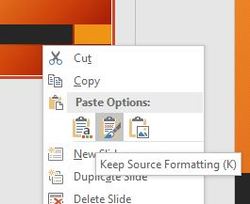|
It is exciting to find a book that lends itself to creative thinking, simple research, and logical reasoning. This picture book allows students to think and create. Enrichment teachers know the value of a well-timed picture book. Many gifted students read early, so they move on to chapter books quickly and miss a lot of the fun art of picture books. Also, picture books allow the whole class to enjoy a story and art together. The best picture books allow a class to go beyond the covers and create something new, and Roger McGough's Until I Met Dudley does just that. A Summary of Until I Met Dudley McGough's book is written in a pattern students will quickly pick up on. The innocent narrator offers an imaginative explanation for a common household appliance, and then Dudley offers a technical explanation on the following pages. Because the art is done by the legendary Chris Riddell, it is both playful and precise. When the narrator details how cats lick dishes clean inside a dishwasher, the art is fun and detailed. When Dudley explains how a dishwasher actually works, the art is technical with bright, happy lines. Using Until I Met Dudley to Encourage Creative Thinking After students have seen and heard Until I Met Dudley, many of them will want to make their own similar stories. This is the perfect chance for teachers to develop creative thinking skills. Instruct students to fluently list mechanical objects that they want to learn more about, and then have them come up with a creative explanation of how it works. It is important that teachers allow students a wide range of possible springboards. Many students will choose musical instruments and toys, which is fine. Although everything in the book plugs in, the objects students choose do not need to be limited to electrical appliances. Students should sketch out a picture of the creative explanation, and then then write a short narrative (about a paragraph, like the book) to connect the picture to the back story. Using Until I Met Dudley to Encourage Simple Research Once students have created the creative explanation, it is time to research the real explanation. Even if students think they know how, teachers should insist they look up the technical points because Until I Met Dudley is a very precise book and students will need to echo that exactness. The book The Way Things Work by David Macaulay and the website for How Stuff Works is an excellent resource for students. After students have learned the actual workings of the object, they need to create a detailed diagram and explain how it works, again writing a short paragraph that echoes Dudley's style of explaining. How Until I Met Dudley Encourages Logical ReasoningIn both the creative and the logical explanations, students need to present a logical flow of cause and effect to show how something works. The book is so thorough that students will find themselves developing logical skills simply through the art of creating and discussing diagrams. Teachers should allow at least four hours for this activity, depending on what research resources are available. Binding the pages to create a class version of Until I Met Dudley will tie the whole thing together and offer something to share with parents as they are learning more about the enrichment program and demonstrating how students think, create, and learn individually. Until I Met Dudley: How Everyday Things Really Work (ISBN: 0711211299) was published by Frances Lincoln Publishers Ltd in 1999 and is still readily available. It was written by Roger McGough and illustrated by Chris Riddell. Originally posted on Suite101 on June 23rd, 2009
0 Comments
I joined the National Writing Project as a Teacher Consultant after my second year of teaching, when I went through the Oklahoma State University Summer Institute.
Today I am the webmaster for the OSU Writing Project and one of the teachers involved in the College Ready Writers Program, as well as a Co-Director of Youth Programming. There have been many times over the years that I have needed an idea, a resource, or feedback, and the Writing Project is my best source. I recently recommended some children's books and activities to a friend who works at a high school alternative school, and when I went back to find my student examples, I discovered that the activities I recommended came to me from an OSU Writing Project workshop in 1998. This past summer, I attended a Shakespeare workshop at OU, and one of my Writing Project teacher friends is getting ready to teach Shakespeare with the material I collected at the conference. How lucky I am to both gain from the resources and get to be the resource at times! If if you need professional development related to literacy, try the Writing Project in your state. It is career-changing and life-enhancing!  Zane Bloser mini-lesson on Voice from Six Traits Zane Bloser mini-lesson on Voice from Six Traits have taught students in sixth grade through college, and the Six Traits of Writing* adapts to every level. This semester I am teaching Comp 1 and I found a great resource for teachers who use Six Traits in Zane Bloser. I have used their PowerPoints in the past, and they are adaptable so I made them more college friendly by strengthening the examples and using text sets from They Say, I Say. I have no affiliation with the company, I just like their materials and recommend them to other teachers. The Zane Bloser presentations are loveable because:
 How to paste a PowerPoint slide and keep the original theme. How to paste a PowerPoint slide and keep the original theme. It is actually tricky to highlight in PowerPoint, so it is nice to have a pre-made presentation. In order for the highlighting to stay consistent, however, I had to copy and paste the theme into the current presentation. To do this, copy the original slide, and then move into your new presentation. Right-click on the slide right before you the place that you want to insert your new slide, and choose the middle paste button that says "Keep Source Formatting". * I know it is more precise to say 6+1 Traits, but I am used to the old school wording. Also, writing out numbers feels right.
|
AuthorAlly Sharp is a teacher, writer and editor, and technology trainer. Archives
December 2016
Categories
All
|

 RSS Feed
RSS Feed